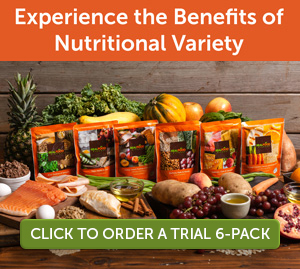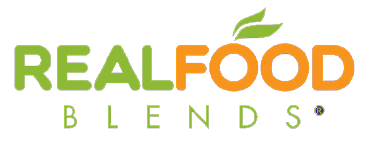
The following is a guest blog post from Weronika Brill RN. More tips on transitioning to real food through the feeding tube are available here.
——–
For many “typical” parents, the transition to real food has already begun at or before the age of one and, it seems like an easy transition. But for parents of children that use a G-tube as a primary source for nutrition, it can seem like a daunting task.
When making a plan for transition I have a philosophy of trying to create as “normal” an atmosphere at home as possible. I believe in including your special needs child during mealtimes and having regular schedules for them. I also don’t believe in continuous night feeding unless medically necessary (which is very different from feeding a snack at night). And as a special needs mom myself, I know that the less your house becomes a hospital and more of a home, the happier everyone will be.
Before starting the transition to a BD I recommend you consider the following:
Set realistic goals
There are many BD Facebook groups where you see what I call, “super blending moms.” These moms add 40 different organic “super-foods” to their child’s meals and blend massive quantities of food, freezing a month worth of blends. Having a goal to do big batch blending, with a large variety of foods, may not be realistic initially; big batch blending might be a better goal for a toddler that has been tolerating BD for a while.
A realistic goal could be: “I’m going to find a few foods that my child tolerates very well and slowly add variety.” Another realistic goal may be: “my child is throwing up three times a day with formula meals; I am going to find one food a week that doesn’t make him/her throw up.”
Understand the work
Initially it may feel like meal preparation is going to consume all of your time, and it just might until you get the hang of it. Not only are you going to be trying out new foods for your child but also you are going to be adding an extra few steps that parents of “typical” children don’t have: blending, washing the blender and then feeding your child.
Don’t get overwhelmed
Many parents that I consult with fixate on too many issues and become overwhelmed quickly by the entire process. For example, I created a meal plan for a young couple whose child was throwing up a lot of her formula meals and having loose stools throughout the day. Because she wasn’t gaining weight and absorbing much on formula, the parents were consumed with her intake of calories and variety of nutrients. While these concerns are valid, they shouldn’t outweigh the main issue of excessive vomiting and loose stool.
In these situations parents need to step back and reevaluate goals–if they are to rid your child of

Weronika Brill is a registered nurse and consults with parents on real food tube feeding. Most importantly, she’s the mom to her tube-fed son!
vomiting and loose stool with formula feeds, then you must take the initial step of a slow transition. Once tolerance is established, calories, variety, and any further goals can be addressed.
Your blender is the key to success
You will need a professional grade blender, either a Vitamix or Blendtec, and usually any model will do. If you can’t afford a brand-new one, both companies offer refurbished models at almost half the price and with a warranty. (Editor’s note: Vitamix has put their medical discount program on hold.) If that is still too expensive, Ebay is a great option. If you can’t afford a blender or do not have the time to dedicate to meal preparation, you still have real food options such as Real Food Blends, which many insurance companies cover.
The transition
Transitioning can take time. I have seen some children take weeks to transition to a full blended diet while others can adapt quite quickly.
While many recommend transitioning to baby food and baby cereal, I like to take caution with these foods. This is because many special needs children that need to eat through a g-tube do so because of a neurologic deficit. I find that many of these children are sensitive to sugars, preservatives, processed, and high carb foods. Dr. Natasha Campbell-McBride, author of Gut and Psychology Syndrome, has noted a clear connection between digestive problems and neurological problems.
I don’t recommend any processed foods; all of my clients’ children start out with homemade bone broth. To get started, you can watch my “how to” video here or recipe here.
The schedule
Day 1. Start out with substituting one meal with clear bone broth and continue with all other meals the same.
Day 2. Make the first meal of the day bone broth and a little bit of chicken and carrot. If your child is tolerant of the broth mixture then continue replacing the rest of their meals with this mixture.
Day 3. If there are no egg allergies and it’s a typical food in the home, give a hard boiled egg yolk with half an avocado mixed with water for breakfast. Give the bone broth mix for the rest of the meals.
Day 4. Add a half of a fruit to your egg yolk and ½ avocado with a teaspoon of coconut oil. You can use the egg mixture once or twice a day with the bone broth mixture for the other meals.
As you ease into more variety you can add kale or spinach to your egg blend. You can later replace the ½ egg with a tablespoon of nut butter or ½ cup of unprocessed oatmeal or even ¼- ½ cup of Greek yogurt. You can use coconut milk (native forest brand has no additives) instead of water or whole milk.
You can also add more vegetables, like potatoes or green beans, to your soup blends.
If you decide to permanently leave dairy out then discuss a possible Calcium and Vitamin D supplement with your child’s pediatrician.
Real Food Blends
Once you’ve fully transitioned your child, you can introduce Real Food Blends. Many parents are interested in using Read Food Blends because they are pre-blended real food and, in many cases, covered by insurance. There are many people who use Real Food Blends exclusively for their nutritional needs (make sure to add a multi-vitamin!). Real Food Blends are also great for traveling or for school blends.
It’s important to consider that one package of Real Food Blends may contain enough protein for an entire day for a one year old with only about half the calories. For example, the Salmon, Oats & Squash blend has 12g of protein and 330 calories in 267g. I recommend adding a whole avocado (322 calories) and 160ml of Native Forest coconut milk (140 calories) to make a total of 792 calories. Add any additional water as needed and you have an entire days worth of food!
Considerations
Constipation
Low tone and high tone children are more likely to be constipated. Even “typical” children get constipated at times. You as a parent need to find a way to make your child have daily bowel movements. If you can’t find any foods that do it then you need to see their pediatrician to develop a bowel routine. It is critical that your child has a bowel movement on a regular basis to reduce reflux and improve overall comfort.
Probiotics
Your child needs to have probiotics included in their diet by either prescription or naturally from foods. Some are more potent than others, so I don’t recommend adding them to the mix. Yogurt is usually safe to mix but a probiotic like Bulgarian Buttermilk can spoil a whole blend quickly.
Water
Make sure your child receives enough water to have lots of wet diapers throughout the day. Since it is based on weight and maybe activity, your child’s pediatrician can give you the number for the exact amount of fluid your child needs for the day.
Keep it simple
Your child needs a variety of nutrients, which doesn’t always equate to a variety of food. A fruit such as an avocado contributes nearly 20 vitamins, minerals and phytonutrients, including vitamin E, vitamin C, folate, fiber, iron, potassium, 81 micrograms of lutein and 19 micrograms of beta-carotene. Something like a cookie can have a large variety of ingredients and calories but wouldn’t be considered nutritious. For this reason, I always try to tell parents to not be preoccupied with the variety of foods at first.
Keep your child’s pediatrician in the loop
Your child’s doctor should always be aware of any new diet. They might want to recommend a multivitamin or have you avoid certain foods that shouldn’t be consumed with a medication. They can also address any bowel issues that come up during the transition.
—-
Veronica Brill RN is available for private consultations. Please visit her Facebook page, Tweet her or email her at VeronicaBrillRN@gmail.com.
*The above content is not to be considered medical advice. Always consult your child’s medical team before any changes to their diet, especially children with feeding tubes.







Excellent post – thank you so much! I am reading in hindsight – already 4 years into blending whole foods, but sure wish I had this information when I was starting out! I will keep a copy of this to share with other parents along the way.
Loran